Music Distribution: 10 Steps To Releasing A Song Successfully And Head-Ache-Free
If you’re reading this, you’re either struggling to understand music distribution, or you’re looking for ways to learn more about successfully distributing your music on streaming platforms.
And by ‘successfully,’ I’m talking about generating significant streams, making noise in your industry, and making money off your independent releases.
These days, anyone can get their songs on Spotify, Apple Music, or Deezer. However — not everyone reaps the full benefits of it.
Everyday struggles of ‘not being able to reach >1000 streams’ or ‘not being able to collect revenue that is rightfully yours’ are very familiar.
While online streaming services have been around for a minute and music distribution services, such as CD Baby and DistroKid, make distributing music easy, they often focus their support and knowledge bases on what’s important to them.
And as a result, they’re skipping essential parts in the process of going from zero to publishing a song and collecting earnings that are rightfully yours.
We wrote this guide to teach you how to make the most out of music distribution, and it will cover all of the above (and more).
This is not going to be a quick-read (!) But I promise you, if you’re looking for a complete and concise guide to music distribution, you can stop going down the internet rabbit-hole to find answers. Most likely, you’ll find them here.
Who Am I?

My name is Jay Urban, and I’m a multi-genre producer from Vancouver, Canada with more than 8+ years of experience, previously worked with Sony Music, RCA Records, Macklemore, Jason Derulos’s crew, Soulja Boy, Rich The Kid and many other major and indie artists.
If you’re familiar with the industry of selling/buying beats, you’ve probably come across my name before. I’ve dedicated the past five years to share my knowledge about the ‘new music industry,’ and I have educated thousands of creators on topics such as ‘licensing beats,‘ ‘music business,’ ‘selling beats online,’ and more.
So far my extensive catalog with beats has received more than 5 million plays and counting. I have lots of customers, artists, and labels that I constantly work with and they always come back to working with me. As I was told they love the way I talk to my customers, provide personal discounts and help with any troubles via email, txt or phone at any time of the day.
In addition to that, I have a great understanding of production, licensing, syncing and marketing aspects in this industry.
Today, songs with my production get played all over the world and being featured by online music stores, TV, radio stations, films, and shows.
I specialize in producing Pop beats, Hip-Hop Beats, R&B Beats, Afro Beats, Latin Beats and EDM beats in the style of today’s most popular artists.
What you will learn from this guide
Our primary goal for this guide is to teach you everything you need to know about distributing your music on platforms like Spotify, Apple Music, YouTube Music, and more.
This guide will include all the required (actionable and practical) steps to gain followers, listeners, fans, and collect revenue from your independent releases.
However — as we were creating this guide and testing it out with some of our clients, we noticed that there’s more to ‘music distribution’ than meets the eye. The creative aspect, as well as your marketing efforts and understanding of specific business aspects, are critical to make this work.
This is why we’ve divided this guide into three different parts. (You can find a full breakdown of the table of content below)
- Part 1 — The Creative Side of Distributing Music
- Part 2 — The Business Aspect of Distributing Music
- Part 3 — Down To Distribution
Furthermore — these three parts will include links to sub-articles posted on our blog as well. These sub-articles will dive deeper into topics mentioned briefly and concisely in this full guide.
The sub-articles hyperlinked within this guide may also direct to other valuable external resources we believe are useful in following the steps outlined in this guide.
We recommend using this guide as a reference and bookmark this page right away. It will outline your course of action from start-to-finish, and you can refer back to this for every new song you decide to release.
Table Of Contents
- Who Am I?
- What you will learn from this guide
- Step 1: The Writing Process
- The Post-Writing Process
- Step 2: The Technical & Creative Aspect of Recording
- Step 3: Mixing Your Vocal Tracks
- Step 4: The Master
- What is the difference between Mixing and Mastering?
- Step 5: The Importance of Compelling Artwork
- Step 6: Rights & Limitations To Your Song
- Licensing Beats From Online Producers
- Refrain From Using Distributors’ YouTube Content ID services
- Step 7: Copyright Ownership: Who Owns What?
- Performing Arts Copyright
- Sound Recording Copyright
- “Copy that?”
- Collecting Your Royalties
- Step 8: Performing Rights Organizations (PRO)
- Step 9: Publishing Royalties
- Key takeaways for Part 2 & Checklist
- Why do you need a distributor?
- Step 10: Which Distributor Should You Sign Up With
- Get your sh*t in order (!)
- Submitting your song(s) for Distribution
- 10 Steps To Releasing Your Song Successfully And Head-Ache-Free.
Part 1: The Creative Side

The creative process of producing a song consists of four main steps.
- Writing
- Recording
- Mixing
- Mastering
As apparent as this process may sound to some of you, I ask you to at least skim down this part of the guide, even if it’s to check and validate that you’re on the right track.
I promise you, this part has everything to do with successfully distributing your music. Furthermore, in this guide, it’ll become much clearer how a lack of attention and effort put into these four parts individually can drastically influence your final results.
Step 1: The Writing Process
The process of writing lyrics should be very familiar to you. This part of the creative process is different for everyone. As a producer and engineer myself, this is something I never give comments or suggestions on and stay away from intentionally.
Your lyrics speak of your identity, and the process and methods you use are usually acquired through your way of life.
While some like to write on-the-spot, in a studio session, or in the presence of others, you might feel more comfortable penning down your lyrics while being alone, in bed, or when you’re on your way to work or school.
Don’t worry. There’s no need to make any changes to your writing process to make a successful song.
However — within this writing process, there’s a step that does not come naturally to everyone and is often overlooked.
The Post-Writing Process
After you’ve penned down your lyrics, you need to analyze your lyrics and structure your song in a way that makes sense to the general listener.
This sometimes requires (re)arranging your lyrics, moving parts of your song around (verses, choruses, pre-choruses), or — in more extreme cases — completely removing certain elements.
All of the above helps grab people’s attention and hold on to it for as long as possible.
Some practical examples:
- If the best and most catchy part of your song is the chorus, you might want to start with that.
- If your song consists of a story, you might want to build up to that slowly. A technique often used in slow jams and ballads.
- You also might want to cut your verses short and create quicker and more natural transitions into the chorus.
You might think, how does this relate to music distribution? Well — across all platforms, your first intention should be to grab people’s attention with your music and have them listen to your songs for as longand as many times possible. This is particularly important for platforms such as YouTube and Spotify.
The algorithms that get your songs in rotation and in front of others (“recommended”) highly depends on “how long” someone listens to your music.
On YouTube, this metric is better known as “Average Watch Time.”
Also, on certain platforms, streams or views are not even counted if people listen to your song for less than 15-seconds.
If you would analyze the structure of some of your favorite songs (preferably songs that are similar to your style of music) — You would notice the similarities in structures. Professionals have developed and continue to apply these structures for a reason.
For example, 12-16 bar verses for rappers. Or a pre-chorus that consists of the same lyrics (in R&B and Pop songs).
Such repeat factors tie in with people’s attention span these days. If you skim the Apple Music charts, you must have noticed that songs are becoming shorter. (2,5 min. On avg. while it used to be 3,5+ min.)
Two reasons why professionals carefully structure their songs these days:
- The attention span of listeners has shortened over the years
- Having quicker rotation and play-through on albums and playlists to generate more streams (thus more revenue)
Step 2: The Technical & Creative Aspect of Recording
A chain is only as strong as its weakest link.
To some degree, the same is true when it comes to making a song. Each step in creating a song is equally important and should never be rushed or considered ‘fixable later.’ (even though, in some cases, this might be possible.)
If you happen to be an audio engineer reading this, you must be familiar with clients rushing their recordings based on the common misconception: “No worries, my engineer will fix this in post.”
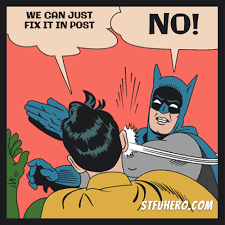
“You can polish a turd as much as you want, but you can’t turn it into a diamond. In the end, it’s still a turd.”
The process of recording is as much a creative process as it is a technical process.
- The creative aspect of recording speaks about the emotional load in a song, the deliverance of your story, or the showcasing of talent and vocal skills.
- The technical aspect of recording speaks about the use of proper equipment, and more importantly, the knowledge of how to work with such equipment.
Both should be treated as equally important. However, I’d like to focus more on the technical aspect. From my personal experience — it is one of the main reasons why some songs do not live up to their full potential.
For more information about recording vocals, please refer to this article: Creating Professional Music in an Amateur Studio.
Why am I covering vocal recording in this guide about music distribution?
Everything is intertwined. The lack of quality of your recorded vocals may result in an unprofessional sounding record. You’ll learn more about this in the next topic of “Mixing & Mastering.”
In other words; Mixing engineers can only do their best work if they’re working with technically good recorded vocals.
And with these technicalities, I’m referring to things like:
- The quality of equipment (microphones, preamps, even pop-filters)
- The quality of the environment (vocal booths, acoustically treated rooms, low background noise)
- The recording techniques mastered by the artist (microphone distance, vocal performance)
- The quality of audio (no clipping on audio files, leaving several dB of headroom)
The mixing & mastering process will determine the quality of your song. And the quality of your song — you guessed it — heavily influences the success of your release.
While the internet sometimes makes it seem like you can record a song on your iPhone, mix it down, and upload it to Spotify, in reality — things don’t always play out this way.
Step 3: Mixing Your Vocal Tracks
First, I want to stress the importance of a ‘good’ mix and why your song is only as good as you can portray it to the listener.
Imagine looking at the best photo you’ve ever seen, but you can only see the blue colors. Not only would it ruin the image or have you focus your attention on the blue colors, but it would also prevent you from seeing all the beautiful details hidden in the other colors.

The same goes for your music and how it’s mixed. You might have written the best lyrics ever or recorded the best vocals ever.
All this won’t be noticed if your vocals don’t cut through the mix, meaning it sounds as if they are buried underneath a thick blanket of instrumental sounds, effects, or other elements in a song.
A high-quality, professional mix focuses on the individual tracks first and then brings them together as one great sounding track. In the process, each vocal/instrument gets its place in a mix. Professional audio engineers have ways to make the slightest detail of your perfect recording noticeable.
This makes the listening experience for your audience as ‘easy’ and pleasant as possible. In the best-case scenario, people will feel the emotion and get carried away in the songs you’ve worked so hard to create.
And if the combination of high-quality recorded vocal tracks and engineering skills is right, it can take your songs to a whole new level. A level on which Spotify, Apple Music, and all the listeners you’re trying to reach exist to play your music on repeat, share it with others, and become fans of your music.
While some artists have acquired the skill set to mix their vocals, most have not. These artists require the help of a professional to make the most out of their releases.
Hiring a professional audio engineer is one of the best decisions you can make. Finding the right engineer that matches your budget can be challenging. But it doesn’t take away that collaborating during the mixing stage is essential for creating great music.
Eventually, you want to feed not just your perfect listening audience but also Spotify, Apple Music, and YouTube Music’s algorithms with beautiful music.
Looking for professional mixing & mastering services? Feel free to contact me here. — Let’s see if we can make some magic together!
Step 4: The Master
People often confuse “mixing” with “mastering” or think it’s all the same process. But these stages have two different names for a reason.
What is the difference between Mixing and Mastering?
- Mixing engineers make your song sound great
- Mastering engineers make your song sound great on every platform
Imagine baking a cake. The first thing you do is mix all the ingredients together and prepare the cake. Only when you’ve followed the recipe (and checked it twice) — you heat up the oven and bake your cake.
Mixing engineers prep the ingredients and Mastering engineers bake it in the oven. Both steps are required to make a delicious cake.
Mixing engineers work with individual tracks (the ingredients) such as instruments and vocal tracks and balance these individual tracks to create a ‘mixed’ version of your song.
Mastering engineers generally work with a single track (the batter made of your ingredients)and balance the sonic elements of this ‘mixed version’ to create the final ‘mastered’ version you will use for distribution.
The purpose of “mastering” is to create an optimized version of your song that sounds good on all audio systems and media platforms.
You should never skip this step in the production process. Mastering is generally much cheaper than mixing and, without question, worth the investment. In fact, a necessary investment.
Once the mastering engineer is finished working on your song, you will receive the final version(s) in radio-ready, industry-standard, and high-quality formats such as:
- WAV 24bit
- WAV 16bit
- MP3 320kbps
These are also the formats you will need to upload your song(s) to music distribution services such as CD Baby, DistroKid, or TuneCore. (more about this later)
Step 5: The Importance of Compelling Artwork
The final creative step in producing and preparing your song for release is the use of artwork.
First and foremost, you need artwork for all platforms you decide to use for distributing your music. But creating (or having someone else create) compelling artwork is not something you want to take lightly.
Whether you like it or not, “people listen with their eyes.” Chances are pretty high people ‘see’ your song before they hear it. If it looks terrible or unoriginal, that could be a reason for someone to decide not to listen to your music.

In regards to the topic of “playlists” and reaching out to “music supervisors” or “curators,” — your artwork plays a vital role.
The artwork is not only used on a per-song basis. It may as well be considered a way to sculpt your brand as an artist. You could create consistency in certain aesthetic elements when promoting your music so it continually reflects you as an artist.
When given enough thought, attention, and when combined with a creative effort to make your artwork ‘stand-out’ and be unique — you can use it as both your business card and a way-in for new opportunities and connections.
On a side-note: For as long as I can remember, I’ve seen fans collecting their favorite artists’ artwork and merchandise.
As I’m writing this, I’m wearing a t-shirt with Michael Jackson’s famous “Thriller” artwork. I also have a snapback in my office that says “Purpose”, which I bought at the merch stand after a Justin Bieber concert. (Not afraid to admit, I am a Belieber).
Long story short, artwork can go a long way, and it can even revolve into a brand of its own with no direct attachment to the music it once represented.
Another example is a t-shirt I bought, which is old merchandise from the band AC/DC — Guess what? I have never been, and never will be, an AC/DC fan. I did like the shirt, though.
Part 2: The Business Aspect
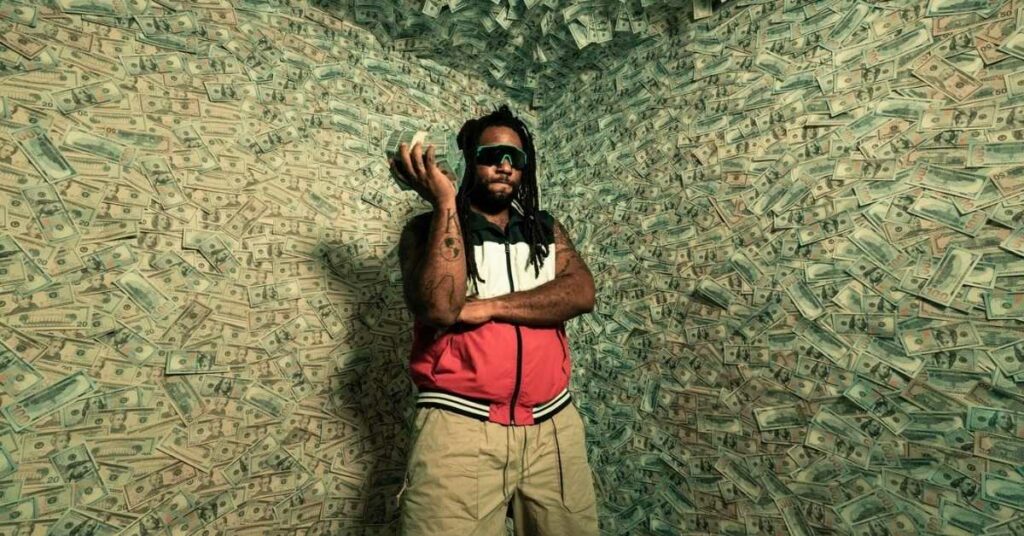
It’s time to get to business! In this second part of The Ultimate Guide To Music Distribution, we’ll walk you through the business side of releasing songs and how to collect earnings that are rightfully yours.
You should know that a 2015 Berklee College of Music report found that anywhere from 20% to 50% of music payments do not make it to their rightful owners. Not only are payment structures (intentionally made) complex. Many artists also fail to understand “how to collect all royalties rightfully theirs” and skip parts in the process which prevents them from claiming all their money.
At the end of this part, you’ll find a checklist of every step you need to take before distributing your song. We will gradually work our way down to understand better why these steps are essential.
If, at some point, you start wondering how these topics relate to the subject of music distribution. We’re covering this because most of today’s violations, conflicts, removal of songs, and errors in payouts are a direct result of insufficient understanding of the process prior to distributing.
As you start working down your checklist to get your songs from Zero to Published, you will stumble upon these things undoubtedly.
We’ll be covering the following topics in regards to setting up the business aspect required before sending your songs off to distribution services:
- Using beats from online producers
- Copyright Ownership: Who owns what?
- Performing Rights Organisations
- Publishing Royalties
- Music Distribution Services
For the sake of keeping this part as concise as possible, we’re going to assume you’re an independent artist without a label, management, or publishing deal. And that you are not limited by any contracts that may entitle a person or entity a percentage of your song credits.
Step 6: Rights & Limitations To Your Song
This part applies to artists that are using instrumentals from (online) producers. You may skip this part only if you’ve created your own music and are the sole creator of all lyrics and music in your song, and have no other creative person to account to.
Licensing Beats From Online Producers
In this new music industry and the business I’m personally active in, it’s very common for artists to license instrumentals.
These licenses permit artists to create songs with other producers’ music and are usually acquired through websites such as BeatStars, Soundee, or Airbit. However — these licenses are often limited in usage rights.
For example:
- Not every license allows distribution on digital streaming platforms.
- It’s also very likely that your license has a streaming cap, and when you reach this cap, the license becomes invalid and requires renewal.
- Most licenses have an expiration date. When you’ve reached the expiration date, you’ll need to renew your license as well. (Usually after 5-10 years)
At this point, it’s a good idea to check your license agreement. Suppose this agreement states any of the above, and you ignore or surpass the usage-rights provided. In that case, you’re in direct violation of the license agreement and accountable for any copyright issues and damages caused by these violations.
If you do not have a license agreement or official written permission from the producer to use the instrumental for your song, you are not allowed to distribute your song, and you can not follow the steps outlined in the rest of this guide.
Need more help understanding Online Beat Licensing? We’ve written an in-depth guide covering the ins- and outs. Definitely give this one a read later.
Refrain From Using Distributors’ YouTube Content ID services
Also applicable to those who use beats from online producers is utilizing YouTube’s Content ID services.
Content ID is YouTube’s automated, scalable system that enables copyright owners to identify YouTube videos that include content they own.
https://www.youtube.com/embed/9g2U12SsRns?feature=oembed
Music Distribution services, such as DistroKid and CD Baby, provide additional services to upload your song to the Content ID system. This system will then detect any use of your song in other YouTube videos. Upon detection, they’ll notify you as the original creator and copyright owner.
Simply put, when given that notice, you can decide to monetize these videos, track them, or block them entirely.
This can help detect whoever is using your music in their videos and even allows you to monetize the videos that contain your song, thus generating an extra stream of (passive) revenue.
However — and this will become clear in the next section — if you do not have master rights, you are not the copyright owner of the song.
In other words; If you’ve licensed the instrumental non-exclusively from an online producer, you are not the copyright owner.
As YouTube claims and expressively mentions; Only copyright owners can submit their music into Content ID.
I want to stress the importance of this, particularly for protecting myself and my fellow producers. But also for any artists out there reading this.
If you’re using beats from online producers on a non-exclusive basis, you should never opt-in for the additional service of YouTube Content ID provided by distributors. It’s as simple as ticking a box when uploading your song, but this puts you in direct violation of international copyright laws regarding copyright ownership.
Suppose you happen to own and control 100% of your song, including the music and lyrics it contains — good for you! You may take full advantage of these additional services.
We’ll get back to this later in this guide as we walk through the submission process for uploading your songs to streaming platforms.
Step 7: Copyright Ownership: Who Owns What?
Before you can upload your songs to (1) a distributor, it’s common to register it first with (2) a Performing Rights Organization and (3) a publishing company. More about this in the next section.
For all three, you need to know “who owns what” in your song.
There are two types of Copyright we will be discussing here.
- Performing Arts (PA-Copyright)
- Sound Recording (SR-Copyright)
Performing Arts Copyright
In most cases, you are not in full control of the PA Copyright in your song, which means you’re sharing copyrights with producers or other writers who helped you with the lyrics.
- Producers own PA-copyright to the MUSIC
- Writers own PA-copyright to the LYRICS
These copyrights are better known as Performing Arts Copyright (PA-Copyright)
Suppose an artist wishes to register their song with a Performing Rights Organization or distribute their songs to streaming services. In that case, the artist must credit every person involved in the song for their part.
Generally speaking, credits are divided as 50% Music & 50% Lyrics.
Sound Recording Copyright
Another form of copyright that relates to your song is Sound Recording Copyright. In the industry, this is better known as the Master Rights.
For the sake of staying concise and to-the-point, all you need to know before distributing your song is whether you are the Master Rights owner or not. Here’s some help.
- If the music in your song is licensed on a non-exclusive basis, you are NOT the Master Rights owner.
- If the music in your song is licensed on an exclusive basis, you ARE the Master Rights owner.
- If you’re signed to a label (major or independent), your contract will state whether you control your masters or not — in most cases; you’re not.
- If you’ve written, produced, and paid for everything related to producing your song, you ARE the Master Rights owner.
- If someone else financed (parts of) the creative and production of your song, you may NOT be the Master Rights owner.
Even if you are not the Master Rights owner, you may still be allowed to distribute your song based on the deals or agreements you have with others involved. (such as a license agreement from the producer for using their beats)
But utilizing services or opportunities that require you to be the Master Rights owner may be limited.
For example, as mentioned in the topic of Content ID, if you’re not the master rights owner, you may not register your song for Content ID.
Another example is submitting and entering deals related to Sync opportunities (TV placements, Film, Netflix, etc.) — this requires approval from other rights-holders.
“Copy that?”

If this is all new to you, I could imagine you’re feeling overwhelmed. In that case, I urge you to dive deeper into this some time to get a better understanding. The above section only covered the basics and ‘need-to-know’ before distributing your song, but there’s more to it.
Here’s another helpful guide that goes more in-depth on the subject of Licenses, Copyright, Ownership, and Royalties.
Recommended read: The Ultimate Guide To Online Beat Licensing
Collecting Your Royalties
The previous sections about usage-rights and copyrights all lead up to this point. From here on out, the steps are more practical. But even here, we will support the following sections with sufficient context to grasp the underlying reasons and real benefits.
This is what it comes down to.
As soon as your music is generating streams, it’s generating royalties. But every stream of your song is not just another dollar in the bank. The payment structures are complex and highly advanced.
“Generating Streams” and “Collecting Your Royalties” are two entirely different subjects. It’s not as simple as signing up with a distributor, generating streams, and expecting to get paid.
The money generated by streams is sent to different companies. These companies collect on behalf of you — the creator. You need to affiliate with these companies to get paid your rightful earnings as a creator.
The following infographic might be of use to get a better understanding.

Before you proceed, please understand that the following sections only scratch the surface and provide you with the practical steps to complete before distributing your songs.
For a more detailed explanation on how to collect your royalties and earnings, we highly recommend reading “The Artists’ Monetization Guide.”
Step 8: Performing Rights Organizations (PRO)
If you wrote or produced your song, you are the owner of at least one part of copyright — specifically the PA-Copyrights. It automatically means that you’re entitled to compensation when your music is played publicly.
By ‘publicly,’ we are not only referring to streaming services. It also includes television, radio broadcasts, and live performances.
The royalties collected from this are “Performance Royalties,” and Performing Rights Organizations (a.k.a. Collection Societies) collect these for you.
These collection societies will then pay out the creators they’ve collected for.
Regarding streaming; For every stream that you generate on Spotify, Apple Music, etc., a percentage of that stream will be collected by the PRO’s — ready to be paid out to the creator.
To collect these royalties, you need to have:
- An affiliation with a PRO
- Your song registered with that PRO.
Preferably, you want to register your songs before you send them off for distribution, but it’s possible to do this after release.
Every country has its PRO, which any writer, composer, or producer can affiliate with. Click here to find out the Performing Rights Organization in your country.
Step 9: Publishing Royalties
In the music industry, a music publisher or publishing company is responsible for ensuring songwriters and composers receive payment when their compositions are used commercially. Similar to a PRO, yet very different.
There are common misunderstandings and confusion regarding PRO’s and Publishing Companies. Many think you only need to sign up with a PRO. That is incorrect.
PRO’s and Publishing are two different entities. You need to sign up with both to collect all your earnings.
Again, royalties generated by a single stream divide into different types of royalties, all of which need to be collected.
Publishing income consists of multiple royalty streams, and a PRO exclusively collects Performance Royalties.
If you don’t have a publishing deal, a publishing administrator can help you collect your publishing royalties.
If you’re starting from scratch, you have two options:
- Sign up with SongTrust (recommended)
- Use the Publishing Administration services provided by the distributor
Some distributors also cover publishing administration and can collect that for you. We advise against that because this ties you in with their service for a long time. If you wish to switch to a different distributor at any point, you can’t because you’re still locked in the deal.
Key takeaways for Part 2 & Checklist
- If you’re using online beats: Check your license agreements and understand your rights and limitations
- Determine who owns what in your song and come to an agreement with all parties involved regarding splits and percentages. (Tip: use a split-sheet template)
- Sign up with a Performing Rights Organization (if you haven’t yet) and register your song(s).
- Sign up with SongTrust if you’re not in a publishing deal yet and register your song(s)
Part 3: Down To Distribution

Once you’ve followed all the steps provided in the previous sections, you’re ready to get your songs distributed and released. As we move on to the actual distribution of your song, you will soon notice why we’ve provided the information and steps in Part 1 and Part 2 of this guide.
Part 3 will be significantly easier to work through because we’ve covered all the possible roadblocks and questions you might run into in the previous parts.
The first action in this is deciding which music distribution service you will choose. Keep in mind, the distributor you will pick will probably be one you’ll stick with for a long time. When you decide to switch to a different one — you will have a hard time transferring your already released catalog.
We’re mentioning this upfront because in extreme cases (which our clients have encountered), songs needed to be removed entirely from streaming services before being able to sign up with a different distributor. It means losing all streams, data, and statistics you’ve worked so hard to build. Not to mention, you’ve paid for these services.
Needless to say. It would be best if you made the right decision. No worries, we’ll help you out with this.
Why do you need a distributor?
Streamings services have taken over what physical music stores used to provide. Back in the day, once every week, a huge truck would stop by the music store and deliver (physical) albums and singles.
These days, thanks to the internet, music has become much more accessible. Most physical music stores have gone out of business (RIP), and streaming services such as Spotify, Pandora, Apple Music, and Tidal have taken over.
Distributors have always played a big part in the chain of the music industry. They initially dealt with physical product distribution. Now, they are responsible for the technology behind digital distribution.
In the early stages of streaming, companies such as Pandora, Spotify, and Apple Music have deliberately decided to work with distributors, functioning as the plug to access their platforms. In other words, the more prominent platforms do not allow artists to upload music directly to their platform.
They prefer working with distributors than with artists directly to maintain an organized, standardized pipeline of data and ‘headache-free’ payout management.
Step 10: Which Distributor Should You Sign Up With
As mentioned in the preface of this part of the guide, it’s best to do your research and sign up with one distributor. Chances are, you’re going to be stuck with them for a long time.
There are over 30+ Digital Distribution Platforms available. A few of those strictly offer services on an invite-only basis to labels or Major artists.
The majority of distribution companies, however, are so-called “Open Distribution Companies.” Most likely, you’ll have to pick one of them.
These are the top 5 most-used and most-popular companies among our clients and network. In alphabetical order:
Everyone offers the same service: Getting your music on digital streaming platforms.
However, — every company has its unique selling points. Better pricing, additional services such as Content ID, or Publishing Administration.
The truth is, as much as we’ve been able to narrow it down, we’re not able to tell which of these is your best choice. It’s something you have to figure out yourself because we can’t tell what you value and need the most from a service.
Get your sh*t in order (!)
Just a quick side-note: During our research, we discovered some proclaimed experts recommending signing up with several distributors to spread out the risks of getting your music banned from streaming services. (E.g. Single 1 & 2 with DistroKid and Single 3 & 4 with CD Baby)

There have been incidents where songs were removed from streaming services due to violating policy terms. Most music distribution companies have a policy of “Two Strikes and You’re Out.” When you mess up twice, they ban your account, and your songs are removed from streaming services.
Signing up with several distributors is only a band-aid and doesn’t fix the underlying cause of ‘why your songs are being removed.’ Instead, you should study and apply the steps outlined in Part 1 and Part 2 of this guide. That will ensure you have your sh*t in order (excuse my French).
At the preface of this very guide and in the introduction of Part 2, we mentioned that there’s more to music distribution than meets the eye. The majority of issues, conflicts, and removals are due to insufficient knowledge and understanding of the business aspects.
This particular issue and false recommendations from proclaimed experts are why we’ve structured this guide as it is.
Submitting your song(s) for Distribution
As soon as you’ve signed up with a music distribution service, they will guide you through the process of submitting your songs.
In this process, you will need to provide the distributor with all your track information. While this is usually when my clients text me for help, you now have all the knowledge and information you need to go through this with ease.
If you get lost at any point, refer back to Part 1 and Part 2 of this guide, and you’ll have no trouble completing your submission.
Here’s a list of questions and options you can expect. (Perhaps, at this point, it’s good to go through this list and see if any of these questions raise any questions with you. If it does, scroll back up to find the answers.)
- Which stores (streaming services) you want your music to be on
- Whether it’s been released before or not
- If it’s an original song or copyright protected
- Your artist’s name
- Song title
- Date of recording
- Release date
- Parties involved and their roles (including other writers and producers)
- If you want (and are allowed) to apply for Sync opportunities, Content ID, or Facebook Monetization
Notably, all distribution services have a unique submission process. However, the data required to complete your song’s registration is precisely similar, just laid out differently.
Before you hit publish
I hope you’ve gotten the answers you were looking for and hopefully learned even more. If you enjoyed this music distribution guide, please drop a comment below and share this on your socials. It would mean a lot to us!
Before you hit publish to get your song(s) distributed to all online streaming services, I’d like to introduce you to another guide we’ve written that goes deeper into marketing your song.
Eventually, we want you to get the most out of your releases. While the information provided in this guide already helped out a lot, I’m sure you’ll find more value in the following guides as well.
- Music Marketing Guide
- The Artist Monetization Guide
10 Steps To Releasing Your Song Successfully And Head-Ache-Free.
- Step 1: Writing your song
- Step 2: Recording your song
- Step 3: Mixing your song
- Step 4: Mastering your song
- Step 5: Creating the artwork for your song
- Step 6: Understanding your rights and limitations
- Step 7: Crediting (co-)writers and (co-)producers
- Step 8: Register your song with a Performing Rights Organization
- Step 9: Register your song with a Publishing Administration Service
- Step 10: Upload your song to a Music Distribution Service








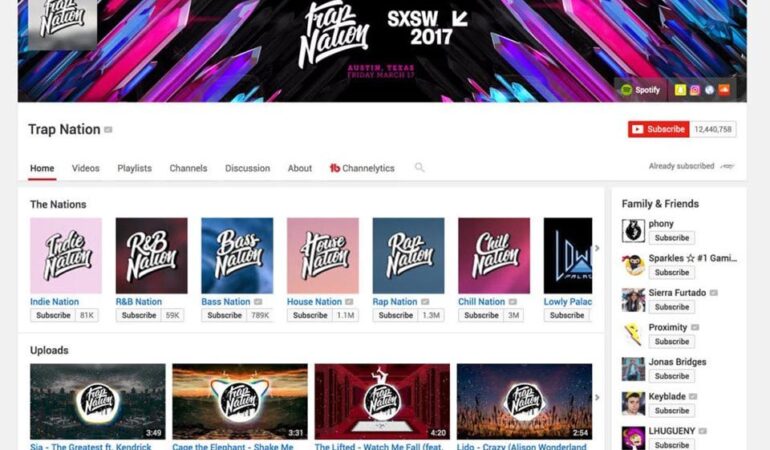

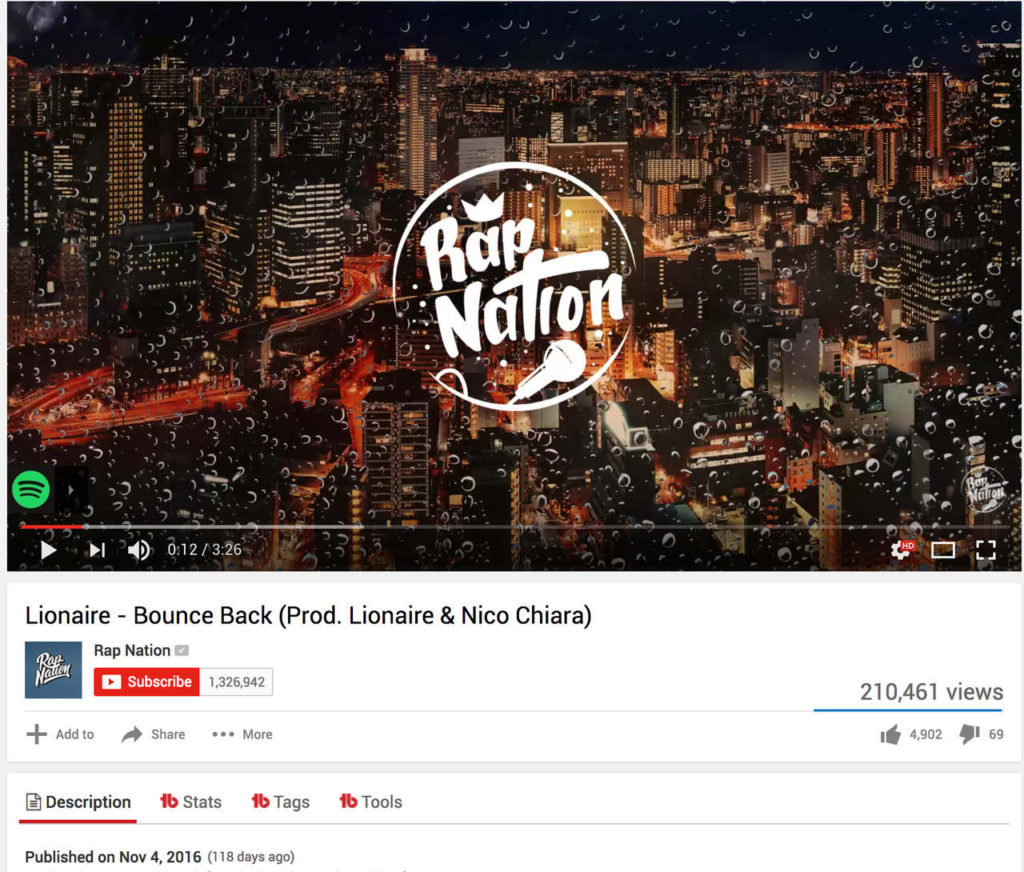
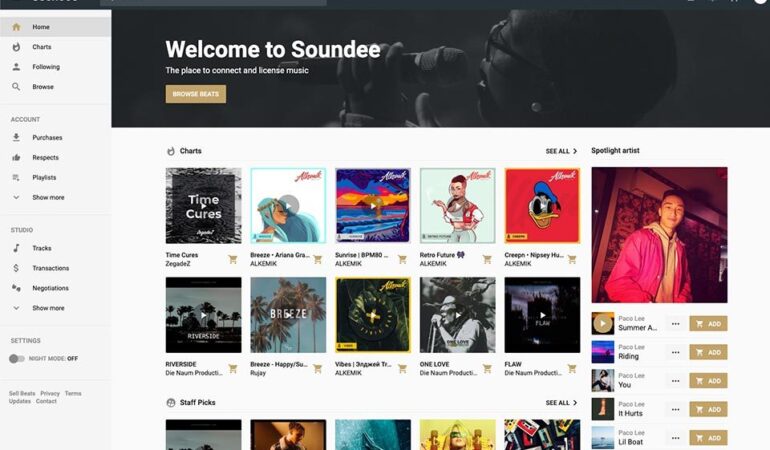

 )
)



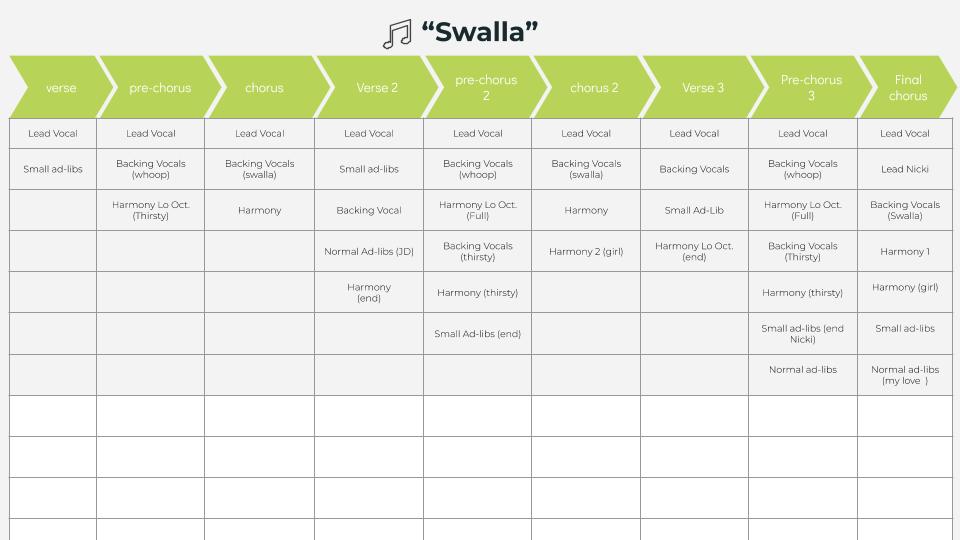




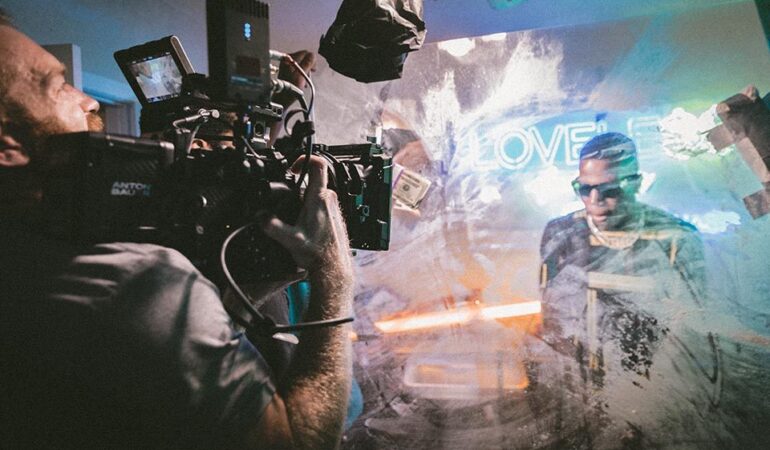


 )
)



